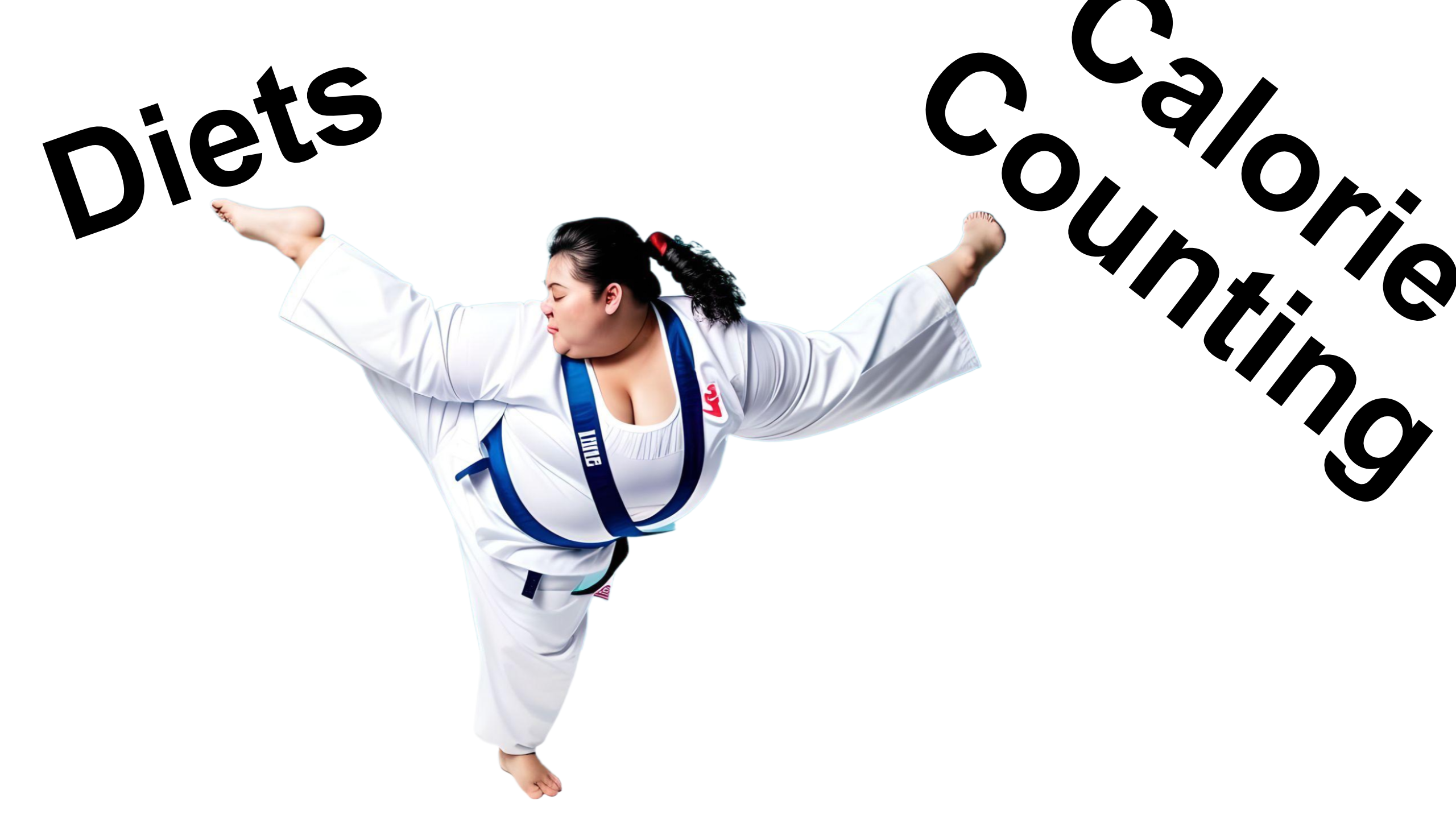My Reconstruction Of Breakfast To Kill All Diets
Have you ever heard of a daily anchor meal?
Me neither. That’s why I “invented” it.
The idea is to “anchor” your diet to a nutrient intake that keeps CVD at bay, promotes longevity, and, ideally, prevents weight gain. No matter what you eat for the rest of the day.
It’s like a daily inoculation against the consequences of giving a damn about diets and calories.
I am concerned about my health. But I am too lazy to fuss at every meal over calories and nutrients.
And I have a profound dislike for entirely depriving myself of all the sinful foods.
How do I get all this under one hat?
With an anchor meal.
So, I decided to turn breakfast into a daily inoculation against the hazards of my hedonistic relationship with food.
Why breakfast?
Because it’s the same every day. It’s a routine on autopilot. Breakfast has to fit efficiently between getting up and getting to work. No one wants to configure it anew every day.
It doesn’t matter what I had for breakfast before I reconfigured it. What matters is how I reconfigured it.
So, let’s have a look at…
Sinful diets’ point of attack
As a health scientist, I know that the most common consequences of unhealthy diets are cardiovascular and metabolic diseases. Just look at the statistics. By age 65, three of every four adults have hypertension, heart disease, and/or diabetes [1]
These conditions develop over decades.
For most of that time, they stay under the radar.
First, because we can’t feel them coming.
Second, the common clinical tests are ill-equipped to detect the earliest signs of damage: dysfunction of the arteries. More specifically, their impaired elasticity, which translates into early vascular aging [2].
To appreciate the importance of that biomarker, you need to understand Mother Nature’s ingenious design of the cardiovascular system.
The Amazing Cardiovascular System
It consists of a little pump (the heart) and a network of conduits (blood vessels) that, if you were to lay them end to end, would reach around the globe.
Imagine your heart as a little handpump, pretty much equal in size to the one in the picture below.
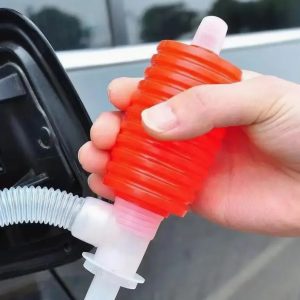
Now, imagine you must manually squeeze that thing to pump its roughly 80 ml content once every second through a network of conduits that, if you were to lay them end to end, would reach around the globe.
That’s exactly what your cardiovascular system does. Close to 5 liters per minute, or 6900 liters per day. Every day for as long as you live.
By age 80, your heart will have pumped enough blood to fill three oil tankers with a capacity of 400,000 barrels each. Amazing, isn’t it?
Now, here comes my point: if that little pump had to do all the work by itself, you wouldn’t live as long as you do.
Just try to squeeze that handpump once every second. You wouldn’t last five minutes.
In fact, your arteries do most of the work. With every squirt of blood that the heart pumps into the biggest vessel, the aorta, the latter expands and then elastically contracts again. Much like a rubber band that snaps back into its resting position.
By doing so, the aorta and its connected vessels push the blood further and further down the entire arterial tree. Which relieves the heart.
The arteries’ capacity to expand and contract depends on the integrity of their inner lining. This lining is called the endothelium.
It is a whisper-thin layer of cells whose most important task (among others) is to produce a molecule called nitric oxide (NO).
NO is the most potent driver of the arteries’ ability to expand and contract. We call that ability “arterial compliance”.
Damage those endothelial cells, and compliance goes down. The arteries become stiffer, and the heart has to work harder.
And damage comes easily.
A lack of nutrients and a lack of exercise will chip away at the endothelium’s integrity. Not overnight, of course.
We only notice it, when we suffer a heart attack, stroke, or aneurysm.
By then, endothelial damage is largely irreversible.
Given all this knowledge, logic demanded that my anchor meal supply all the nutrients that maintain endothelial health and arterial function.
So, let’s have a look at (a) how the endothelium produces this vasodilator NO, and (b) what might interfere with this process.
I am not going to give you a biochemistry lecture. Just a little workshop analogy to help you understand my choice of anchor meal ingredients.
The Production of NO
The endothelial cells have little “machines” that synthesize NO from some “raw material” (substrates). These machines are called endothelial nitric oxide synthase (eNOS).
Biochemists call this type of synthesizing machine an enzyme.
Enzymes almost always need a little “co-factor”, that switches them on. The cofactor for eNOS is called Tetrahydrobiopterin (BH4).
No BH4, no NO production.
Now we know what we need to keep the NO factory up and running: a sufficient supply of co-factors and raw materials.
But we can’t simply put them in our food.
Here is why:
There is no food item that supplies BH4.
The critical raw material is an amino acid called L-arginine.
L-arginine comes in many food items, but designing it into our anchor meal wouldn’t help much.
Research has shown that supplementation with L-Arginine seems to have no effect on endothelial dysfunction [3]. In fact, liberal doses of L-arginine might even increase diabetes risk [4].
So, we have to look at what interferes with the production of NO.
Then we need to find a way to prevent that from happening.
The Interference Of NO Production
L-arginine has an evil twin (“Evil” in respect to NO production only). It’s called ADMA (asymmetric dimethyl arginine, in case you need to know).
The two siblings compete for entry into the eNOS machinery.
But once ADMA enters it, eNOS stops producing NO. It’s like putting Diesel in a racing car.
To make things worse, the ADMA-eNOS pairing produces reactive oxygen species (ROS, the ones you try to eliminate by taking antioxidants).
ROS destroy NO, incapacitate BH4, and thereby further reduce NO availability [5].
In the grand scheme of things, it is ROS production and chronic low-grade inflammation that severely choke the NO-producing machinery.
Now we know that our anchor meal’s purpose is to protect against oxidative and inflammatory damage.
The Ingredients Of The Anchor Meal
Spoiler Alert: It’s a smoothie, not a meal. Which makes it an even better choice for time-starved eaters.
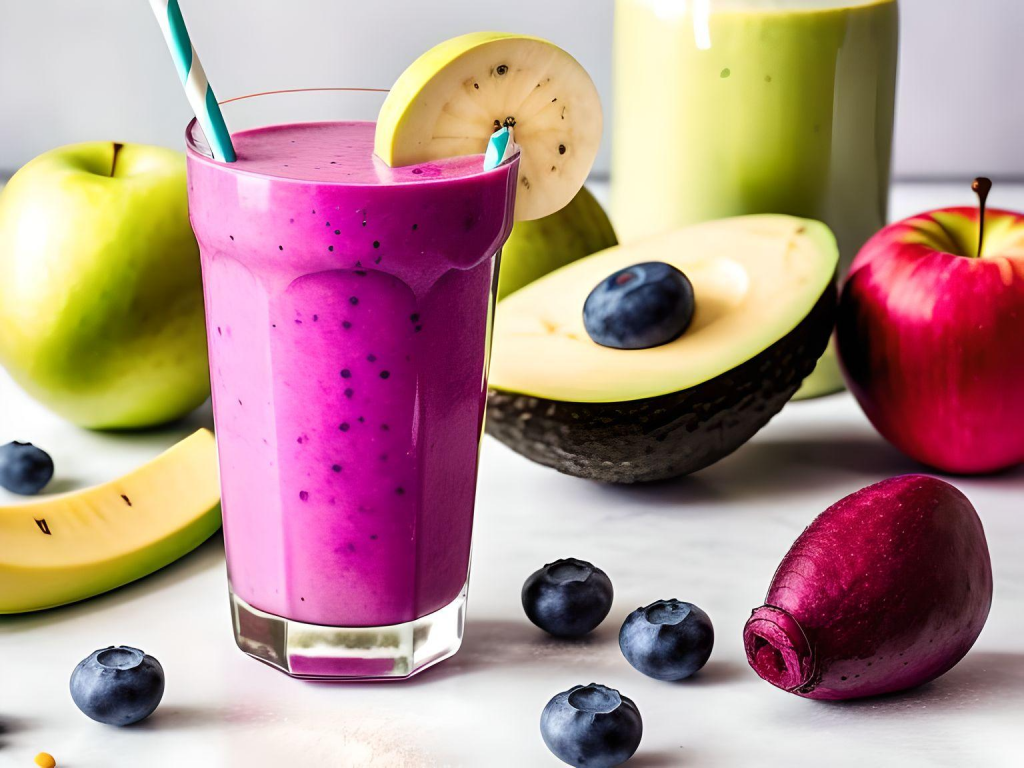
smoothie
The potential of fruits and vegetables to counter pro-inflammatory and pro-oxidant states has been of great interest to medical research.
For many of the natural food components, there are contradictory research results. But the so-called flavonoids, rather reliably show beneficial effects on endothelial dysfunction in randomized controlled trials [6].
The name originates from the Latin word flavus, which means yellow. These flavonoids are responsible for the colors of plants and fruits, not just the yellow ones.
Today, we know a lot of sub-classes of these flavonoids. All of them are part of the greater family of polyphenols, which has roughly 7,000 members.
So, here are the ones that pack the heaviest punch:
Cocoa
The most popular flavonoids are probably those of cocoa. Its flavan-3-ols (I know, the names are confusing) have so consistently produced benefits that the first ever guideline for flavan-3-ols has just recently been published [7].
So, here you have the first ingredient of our anchor meal: cocoa. And no, not in the form of chocolate, but as pure cocoa powder [8].
Blueberries
Flavonoids are also abundant in berries. Their anthocyanins (another group of flavonoids) give blueberries their dark blue skin. Since blueberries have been shown to reduce oxidative stress and inflammation [9], they are the next ingredient for our anchor meal.
Apples
What goes for blueberries also goes for apples [10]. Remember: “an apple a day…”
Curcumin And Black Pepper
One of the better-studied polyphenols is curcumin (the pigment of Turmeric). It spices up your food AND your cardiovascular health [11].
Curcumin comes with one little problem, though.
It is not easily absorbed through the intestinal wall.
Fortunately, adding piperine solves that problem. If you’ve never heard of it: it gives black pepper its pungency. That’s why I add both curcumin and black pepper [12].
Spent Coffee Ground
That might come as a surprise, but hear me out.
Caffeic acid (guess where the name comes from) is another polyphenol that packs a punch for endothelial health. I add it in the form of spent coffee grounds because that’s where caffeic acid is highly concentrated.
It also delivers indigestible fiber. You know what that is good for.
Avocado
Here is the first ingredient that I chose for reasons other than flavonoid content:
Avocado is very rich in the mono-unsaturated fatty acid (MUFA) that you know as olive oil.
So, why not use olive oil?
Olive oil has long been considered to favorably influence blood lipids, particularly cholesterol [13].
Today, science is less convinced about these effects [14]. But “less convinced” doesn’t mean it doesn’t help.
So, I chose the oleic acid-rich Avocado because, contrary to olive oil, it has a side gig as an antimicrobial and anticancer food [15].
Beet Root Juice (BRJ)
BRJ is THE supplier of nitrate, which the body metabolizes into NO.
Actually, it’s not our body that does the metabolizing. Rather, it is the bacteria that reside on the top and back of our tongue.
They reduce BRJ’s nitrate to nitrite, which then enters a pathway that ends in NO. Without those bacteria, there would be no NO from BRJ
To describe this pathway in detail would make this post way too long.
So, just one tip:
Do NOT use anti-microbial mouthwash if you want your vascular system to benefit from the BRJ.
Bananas
I add bananas because of their high potassium and low sodium content. Just the opposite of the normal western diet.
High potassium intake can lower blood pressure, particularly in hypertensive people [16].
So, rather than using a potassium supplement, I take what nature provides.
For one more reason: Adding frozen, ripe bananas gives any smoothie a creamy texture that resembles ice cream.
Protein Powder
I add protein powder for two reasons.
First, I take my anchor-meal breakfast AFTER exercise (every day, strength and cardio). In the 2-hour post-exercise time window, muscle tissue is always grateful for an extra dose of protein.
Second, again, texture. Protein powder adds to the creaminess of the smoothie.
Milk (full fat)
You need a liquid base for your smoothie. My preference is milk. It obviously tastes better than water. And I have no fear of its fat content. The evolving view is that the saturated fats in milk actually benefit your health rather than damage it [17].
Concentrated Lemon Juice (Ascorbic Acid, a.k.a. Vitamin C)
Why is that important?
To keep the flavonoids intact. Flavonoids have one powerful enemy. It’s called polyphenol oxidase (PPO).
PPO is responsible for the browning of fruit. And, at the same time, it metabolizes flavonoids.
Bananas add a lot of PPO to our smoothie. Without neutralizing its effect, our smoothie will rapidly reduce its flavonoid content [18].
Ascorbic acid neutralizes PPO. That’s why I add it in the form of concentrated lemon juice.
Optional: Seasonal Fruits
Of course, you can add as many seasonally available fruits as you like. You may also replace the blueberries with other berries.
Go and experiment!
Preparation
That’s simple. Put everything into a blender and let it do its job.
I add the bananas and blueberries directly from the freezer. As I said, the texture is so much nicer that way.
The Effects
I concocted this smoothie 11 years ago. Then I took it for a spin. A spin that turned into a journey of 11 years and counting.
The anchor meal gives me the comfort of knowing, that, whatever else I eat during the rest of the day, my nutrient supply will be in the green zone.
I have no hypertension, diabetes, or any other ailment that many other guys my age (66) have. I have no problem keeping my weight (76 kg at 180 cm height) down.
I take no medication, except for one: daily exercise.
My vascular age is 18 years behind my calendar age, and I have more “good” than “bad” Cholesterol. My wife, at 67, has benefited even more.
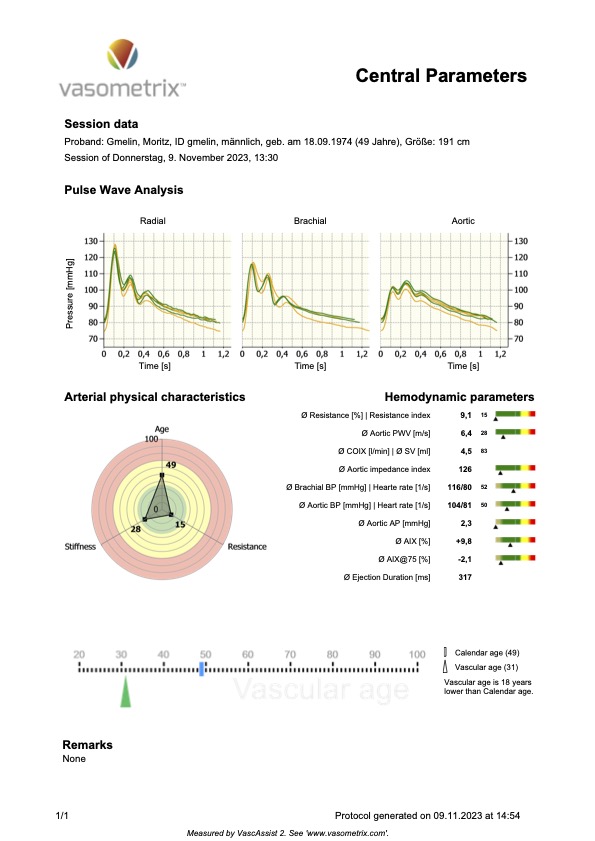
OK, admittedly, this is NOT scientific evidence. It’s anecdotal evidence.
If it motivates you to try it, tell me about your experience. Or about your anchor meal variations. I am really curious.
The Recipe For Two
- 250 ml full-fat milk
- 250 ml beet root juice
- 80 g protein powder (choose a low-sugar version)
- 2 tablespoons cocoa powder
- ½ teaspoon curcumin
- ½ teaspoon black pepper
- 2 ripe, frozen bananas
- 150 g frozen blueberries
- 2 medium-size apples
- 2 ripe avocados
Here is what it looks like after blending:
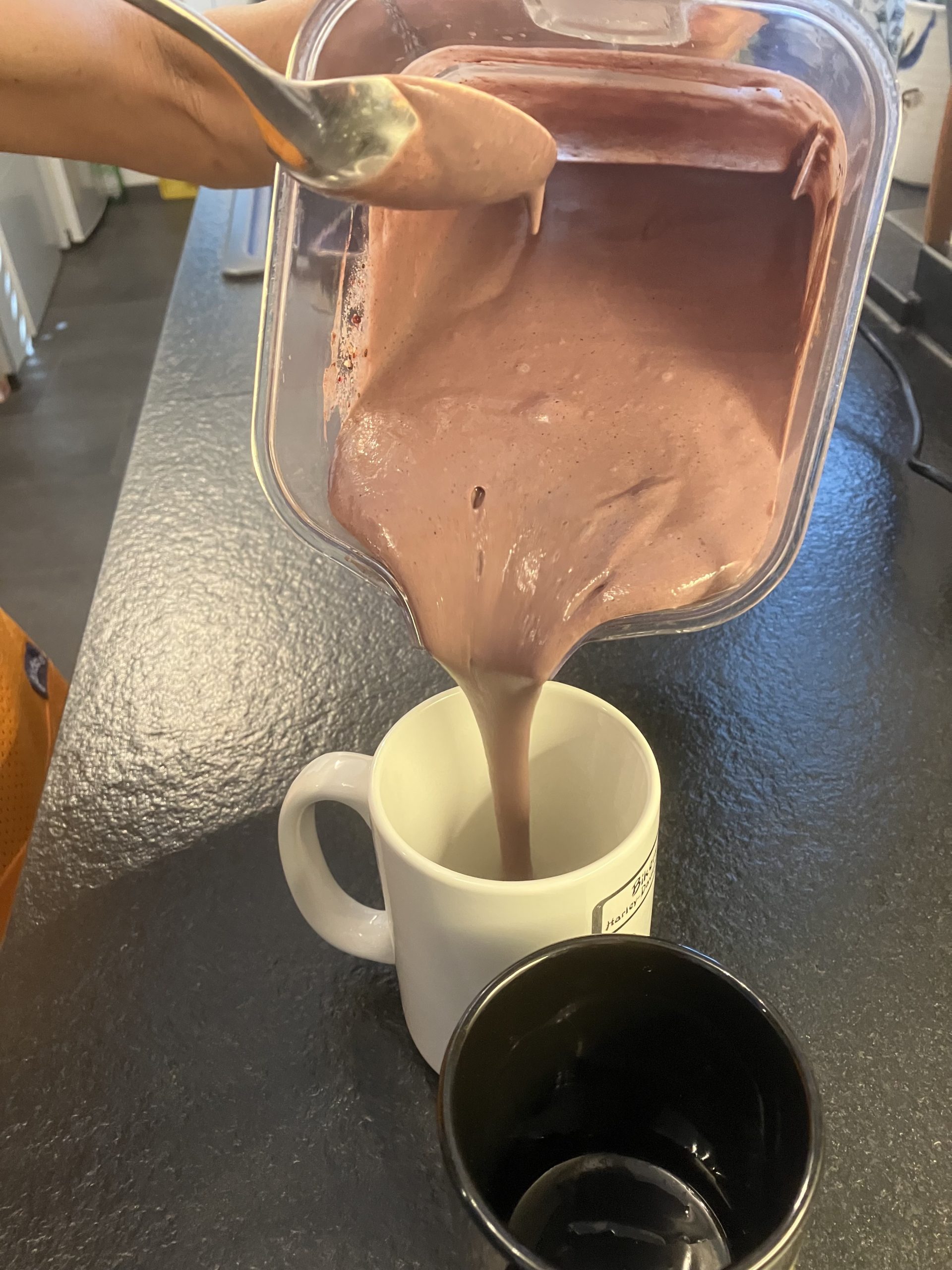
So, now you know why I call this simple recipe an anchor meal.
It is designed to keep you anchored in a healthy, pro-longevity supply of nutrients.
Enjoyed reading? Come say Hi on LinkedIn. I am happy to connect.
PS:
About that three-legged martial artist in the title picture:
It’s what I got from an AI image generator (fotor.com). No matter how much I tried, I couldn’t get that thing to produce something that made physiological sense. But it’s so hilarious, I couldn’t resist using it.
So, don’t let AI generate an anchor meal.
